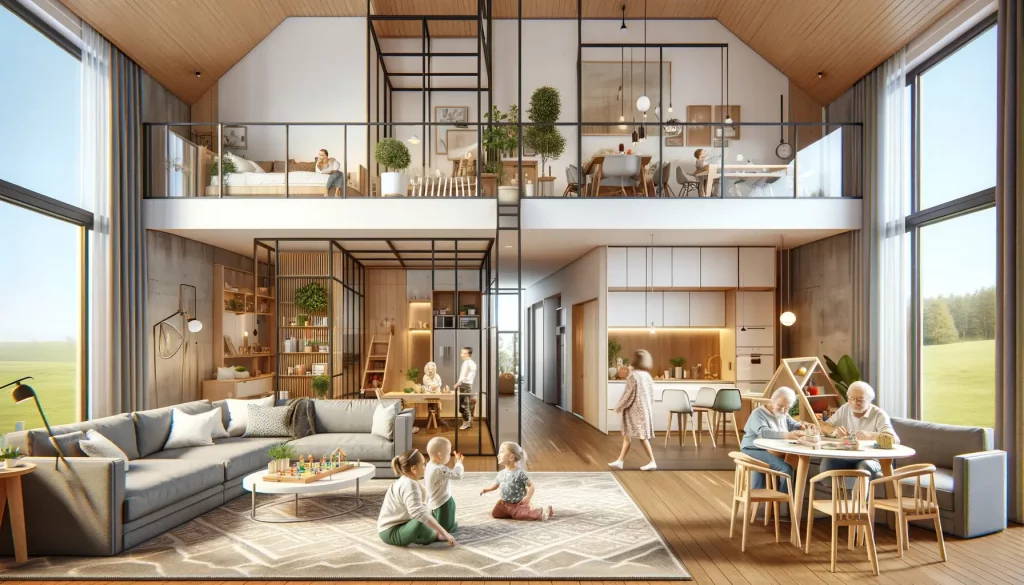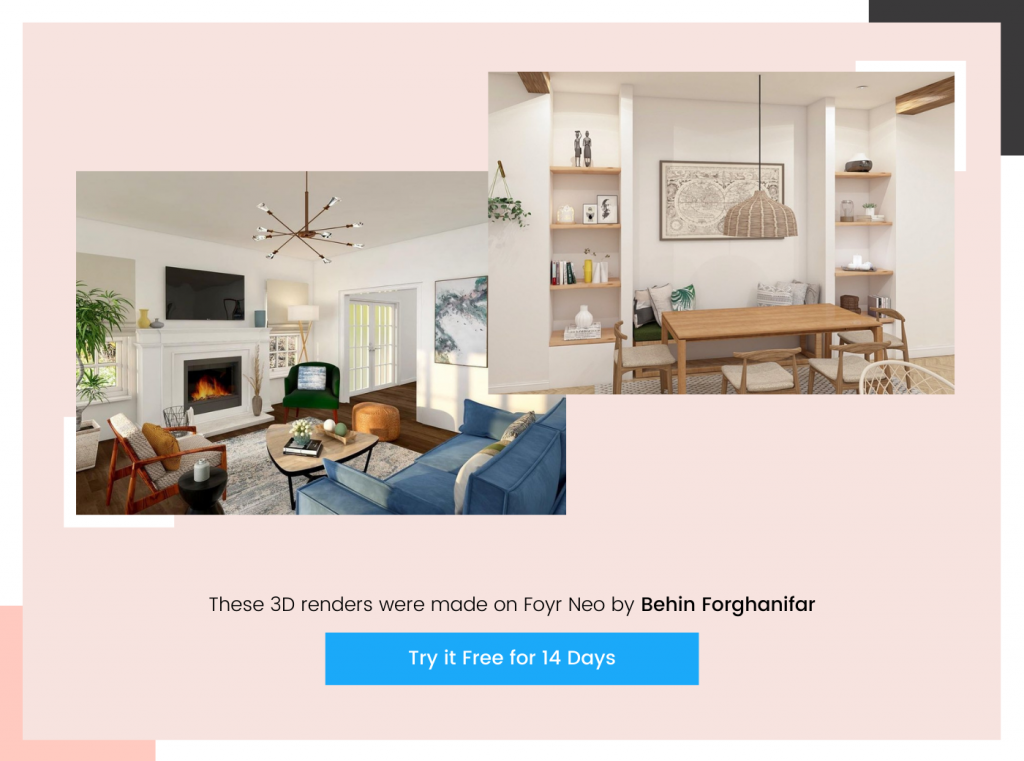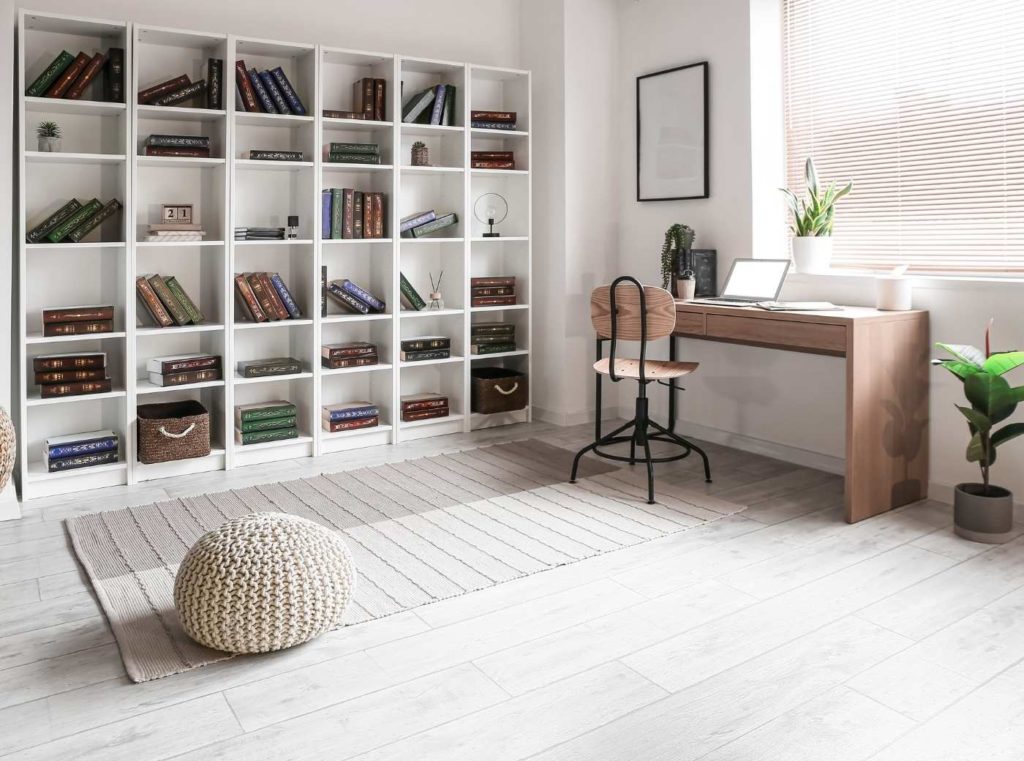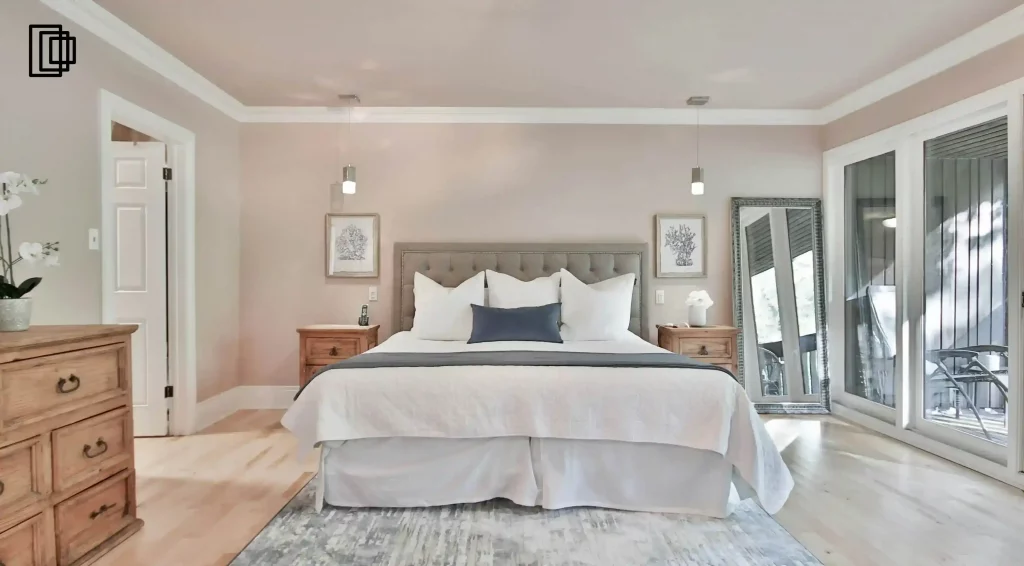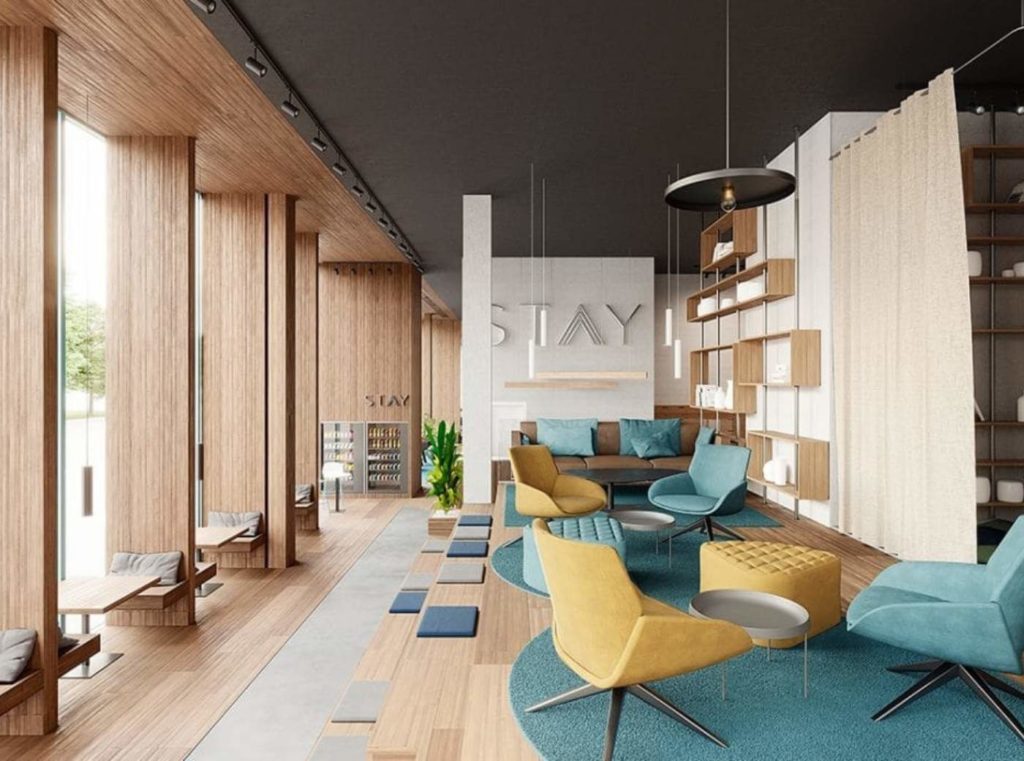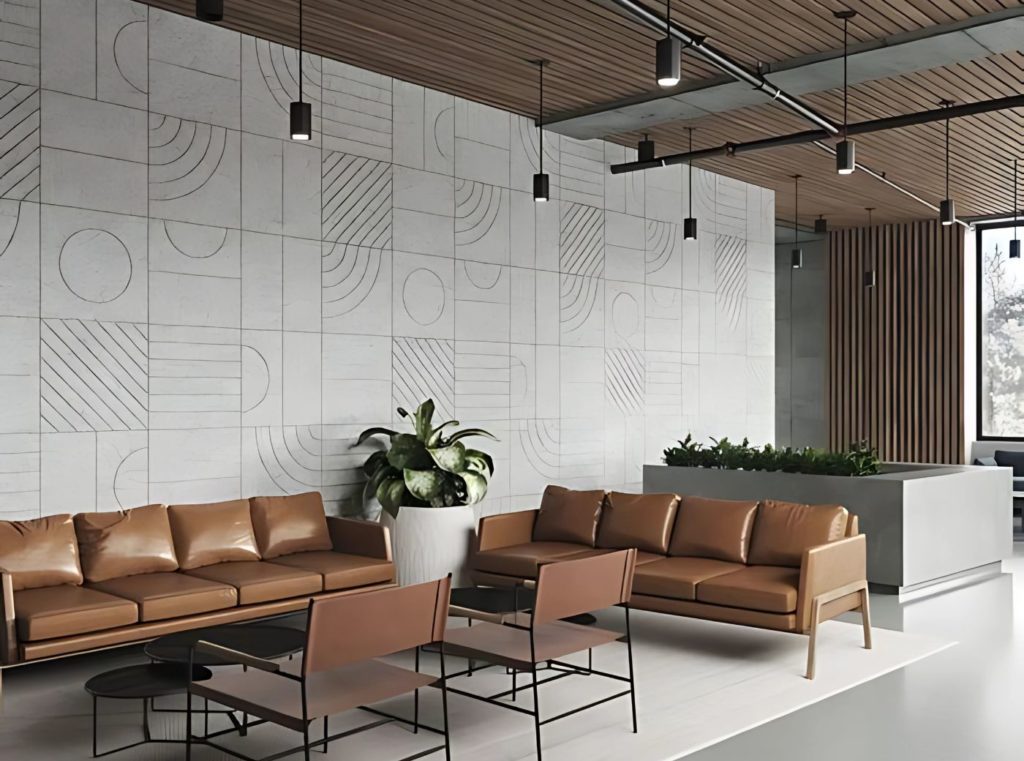Learn » Design Ideas & Inspirations »
Multigenerational living is on the rise, with nearly 26% of Americans living in households with three or more generations, according to a Pew Research Center study. Families are increasingly recognizing the social, financial, and emotional benefits of shared living spaces. However, designing a home that accommodates diverse needs, preferences, and privacy requirements can be complex.
With smart design strategies, a multigenerational home can foster harmony, independence, and functionality while ensuring each generation has a space tailored to their lifestyle.
In this article, we’ll cover key design principles, a room-by-room planning guide, innovative technology integrations, and outdoor solutions that cater to different age groups—helping you create a home that truly supports everyone’s well-being.
Understanding Multigenerational Living
Before delving into the design considerations, it is important to understand the concept of multigenerational living and the reasons behind its rise in popularity. Multigenerational households are defined as those that include two or more adult generations, usually grandparents, parents, and children, living under the same roof. This shift is largely due to cultural changes, economic factors, and changing family dynamics.
The Rise of Multigenerational Households
In recent years, there has been a noticeable increase in multigenerational households. This can be attributed to several factors, including the rising cost of living, the desire to provide care and support for aging parents, and the need for increased financial stability in the face of economic uncertainty. Multigenerational living offers practical advantages such as shared expenses, shared caregiving responsibilities, and the ability to maintain strong family bonds.
One of the key drivers behind the rise of multigenerational households is the rising cost of living. With housing prices skyrocketing in many parts of the world, it has become increasingly difficult for individuals to afford their own homes. As a result, families are choosing to live together, pooling their resources and sharing the financial burden. This not only helps to alleviate the financial strain on each individual, but it also allows for a higher standard of living as expenses are shared among multiple generations. Another factor contributing to the increase in multigenerational households is the desire to provide care and support for aging parents. As the population ages, more and more individuals are finding themselves responsible for the care of their elderly parents. Multigenerational living provides a practical solution to this challenge, as it allows for the close proximity of family members, making it easier to provide the necessary care and support. Additionally, living together can help to alleviate feelings of isolation and loneliness that often accompany old age.
Furthermore, the need for increased financial stability in the face of economic uncertainty has also played a role in the rise of multigenerational households. With the global economy becoming increasingly volatile, individuals are seeking ways to protect themselves and their families from financial hardship. By living together, families can pool their resources and create a more stable financial foundation. This can provide a sense of security and peace of mind, knowing that there is a support network in place should the need arise.
Read also – 7 Pet-Friendly Interior Design Tips for Your Furry Companions.
Benefits of Multigenerational Living
Multigenerational living, involving multiple generations of a family living under one roof, is becoming increasingly common and offers a variety of benefits for each generation involved. This living arrangement brings together children, parents, and grandparents in a shared space, fostering closer relationships and offering numerous advantages:
For Older Adults:
-
- Provides a sense of security.
- Enhances social interaction.
- Opportunity to maintain close relationships with children and grandchildren.
- Combats loneliness and isolation common in old age.
- Offers a built-in support system for daily tasks and emotional support.
For Young Children:
-
- Offers emotional support and a sense of belonging.
- Facilitates opportunities for intergenerational learning.
- Allows children to develop close relationships with grandparents and learn from their wisdom and life experiences.
- Fosters a strong sense of identity.
- Provides a solid foundation for future development.
For the Middle Generation:
-
- Creates a support network and potential cost savings.
- Increases flexibility, especially beneficial for working parents.
- Ensures availability of help with childcare or household chores.
- Alleviates financial strain through shared expenses.
- Enhances financial freedom.
In conclusion, the rise in multigenerational living is driven by factors such as the increasing cost of living, the need for care and support for aging parents, and the desire for financial stability. This living arrangement provides practical advantages like shared expenses and caregiving responsibilities, while also maintaining strong family bonds. Multigenerational living is a unique and fulfilling experience, whether it’s chosen for economic reasons or to foster closer family relationships.
Read also – Designing Homes for Extreme Climates: Challenges and Solutions
Key Principles in Designing Multigenerational Homes
When designing a multigenerational home, it is essential to consider the unique needs of each family member. Here are three key principles to guide your design process.
Accessibility and Mobility
Creating an accessible and mobility-friendly environment is crucial for ensuring the comfort and safety of all family members. When designing a multigenerational home, it’s important to think about the specific needs of older adults or family members with mobility challenges. This includes features such as ramps or stairlifts for easy access to different levels of the house. Additionally, wider doorways should be incorporated to allow for wheelchair accessibility. Non-slip flooring is also essential to prevent falls and provide stability for everyone in the household. Furthermore, it is important to consider the placement of furniture and fixtures to allow for easy maneuverability, ensuring that there are no obstacles that could hinder movement.
Moreover, it is worth considering the installation of grab bars in bathrooms and showers to provide extra support. These small additions can greatly enhance the safety and independence of older adults or family members with mobility limitations. By prioritizing accessibility and mobility, you can create a home that is inclusive and accommodating for all.
Privacy and Personal Space
While multigenerational living fosters close connections and promotes family bonding, it is also important to provide each family member with their own private spaces. Designing separate bedrooms or living areas ensures that everyone has a personal retreat where they can relax and unwind. It is crucial to consider the layout of the house and allocate spaces that offer privacy to each family member.
Additionally, privacy can be achieved through thoughtful layout and soundproofing. By strategically placing walls and using sound-absorbing materials, you can minimize noise transfer between different areas of the house. This is especially important when designing shared spaces, such as living rooms or kitchens, where different activities may be taking place simultaneously. By creating zones with acoustic separation, you can ensure that family members can enjoy their personal space without being disturbed by noise from other areas of the house.
Read also – How to Draw a Floor Plan & Top Mistakes to Avoid
Flexibility and Adaptability
A multigenerational home should be designed with flexibility and adaptability in mind. Family dynamics change over time, and the layout and functionalities of different spaces should be easily modified to accommodate evolving needs. By incorporating elements of flexibility, you can future-proof your home and ensure that it remains functional for years to come.
One way to achieve flexibility is through the use of modular furniture. This allows you to easily reconfigure spaces to suit different purposes or accommodate changing family dynamics. For example, a room that is initially designed as a nursery can be transformed into a home office or a guest room as the children grow older. Another way to create adaptability is through flexible room configurations. By incorporating sliding or folding partitions, you can easily divide or merge spaces as needed. This allows for greater versatility in how rooms are used, providing the opportunity to create larger communal areas or separate private spaces depending on the family’s current requirements.
Furthermore, multipurpose spaces can also contribute to the flexibility of a multigenerational home. Designing areas that can serve different functions, such as a playroom that can be transformed into a yoga studio or a guest room that can double as a home gym, allows for efficient use of space and ensures that every square foot of the house is utilized effectively.
By embracing flexibility and adaptability in your design, you can create a multigenerational home that can easily evolve with the changing needs of your family.
Room-by-Room Guide to Multigenerational Home Design
Now that we have explored the key principles, let’s dive into the room-by-room guide to designing a multigenerational home.
Designing a Multigenerational Kitchen
The kitchen is often the heart of the home, and in a multigenerational setting, it becomes even more essential. Consider incorporating universal design features such as adjustable countertops and cabinets, easy-to-reach storage, and lever-handled faucets for individuals with limited mobility. A spacious layout that allows for multiple cooks and adequate seating for family meals is also important.
When designing a multigenerational kitchen, it’s crucial to think about the diverse needs and preferences of the occupants. For example, older adults may benefit from lower countertops and cabinets to minimize the need for bending or reaching. Installing pull-out shelves and drawers can also make it easier for everyone to access items stored in the kitchen. Additionally, including a variety of seating options, such as bar stools and comfortable chairs, can accommodate individuals of different ages and physical abilities.
Furthermore, incorporating technology into the kitchen can greatly enhance its functionality for all generations. Smart appliances, touchless faucets, and voice-activated controls can make tasks easier and more convenient, especially for those with limited mobility. Consider installing a charging station for electronic devices to cater to the tech-savvy members of the family.
Bedrooms for All Ages
Designing bedrooms that cater to different age groups requires careful consideration. For older adults, ensure that the bedroom is easily accessible, with well-placed lighting and grab bars if needed. Adequate storage solutions, such as built-in wardrobes and drawers, can help keep the space organized and clutter-free.
When it comes to children’s bedrooms, safety should be a top priority. Soft flooring, such as carpet or rubber mats, can cushion falls and reduce the risk of injuries. Low-level furniture, such as beds and dressers, allows young children to easily reach their belongings without assistance. Consider incorporating playful and colorful designs that stimulate creativity and imagination.
For teenagers or young adults, bedrooms can serve as a private retreat and study space. Providing ample storage for books, clothes, and personal items is essential. Consider including a desk or study area with proper lighting and ergonomic seating to support their academic pursuits.
Bathrooms with Universal Design Features
Bathrooms can be potential hazards, especially for older adults or individuals with limited mobility. Incorporating universal design features such as grab bars, non-slip flooring, and walk-in showers can greatly enhance safety and accessibility. Consider also installing adjustable height toilets and sinks to accommodate users of all ages and abilities.
In addition to the essential safety features, there are other ways to make the bathroom a comfortable and enjoyable space for everyone. Installing a vanity with ample counter space and storage can accommodate the needs of multiple family members. Consider incorporating a mirror with built-in lighting for better visibility and a touch of elegance. Furthermore, adding thoughtful touches such as heated towel racks, spa-like showerheads, and built-in speakers can elevate the bathroom experience for all generations. Providing a variety of storage options, such as open shelves and hidden cabinets, can help keep the bathroom organized and clutter-free.
Remember, when designing a multigenerational home, it’s important to create spaces that are not only functional but also reflect the unique personalities and preferences of each family member. By considering the specific needs of different age groups and incorporating universal design principles, you can create a home that is safe, comfortable, and welcoming for everyone.
Read also – Average Bedroom Size for a Standard and Master Bedroom – Everything You Need to Know
Integrating Technology in Multigenerational Homes
Technology plays an increasingly important role in modern living, and it can offer significant benefits in a multigenerational home.
Smart Home Features for Elderly
Smart home technology can provide increased safety, convenience, and peace of mind for older adults. Features such as motion sensor lighting, smart locks, and video doorbells can enhance security, while voice-activated assistants and remote monitoring systems can make everyday tasks easier and provide a greater sense of independence.
Tech Considerations for Children and Teens
For children and teenagers, technology is an integral part of their lives. Designating tech-friendly spaces, such as study areas with ample outlets and charging stations, can ensure that they have dedicated spaces for schoolwork, gaming, and entertainment. It is also important to establish rules and guidelines for technology use to maintain a healthy balance.
Read also – How to Create the Best Architect Portfolio in 2024
Outdoor Spaces for Multigenerational Homes
Outdoor spaces should not be overlooked when designing a multigenerational home. They provide opportunities for relaxation, recreation, and spending quality time together as a family.
Creating Safe and Accessible Outdoor Spaces
Incorporate features such as level pathways, handrails, and textured surfaces to ensure that outdoor areas are safe and accessible for individuals with mobility challenges. Consider raised garden beds or vertical gardening solutions to make gardening accessible to all family members.
Outdoor Spaces for Leisure and Recreation
Design outdoor spaces that cater to the diverse interests and preferences of different family members. This can include areas for gardening, outdoor dining, relaxation spaces with comfortable seating, and play areas for children. Incorporating elements such as shade structures, outdoor heating, and lighting can extend the usability of outdoor spaces throughout the year.
Wrapping Up
In conclusion, designing a multigenerational home that integrates interiors for all ages requires careful consideration of accessibility, privacy, flexibility, and the unique needs of each family member. By following the key principles and room-by-room guide provided in this article, you can create a home that supports and enhances the quality of life for every generation. Additionally, integrating technology and creating outdoor spaces that cater to the diverse interests and preferences of all family members can further enhance the multigenerational living experience. With cutting-edge interior design tools like Foyr Neo, designing and visualizing a multigenerational home can be an exciting and seamless experience. Explore limitless design possibilities by signing up for Foyr Neo’s 14-day free trial today!
FAQs
Multigenerational living involves multiple generations living under one roof, emphasizing shared spaces and intergenerational support.
Aging populations, economic challenges, and cultural preferences are driving the increase in multigenerational households.
By designing private entrances, separate living areas and soundproofing between living spaces.
Shared living expenses and combined resources can reduce individual financial burdens.
It offers a sense of belonging, emotional support and strengthens family bonds but requires clear communication and boundaries to manage conflicts.


